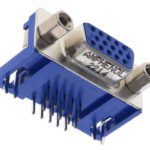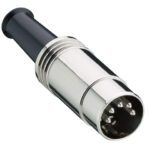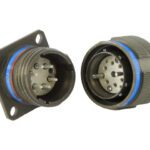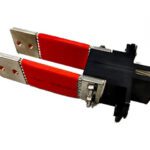What are DC power connectors?
Meet the Connector: DC Power Connectors
DC power connectors, also called DC plugs or barrel connectors, are a common interface for delivering direct current power to small devices and equipment. This plug and socket type connector comes in a diverse array of shapes, sizes, and configurations and is typically used to power electrical devices or deliver power within low-voltage systems, such as subsystems within a vehicle. Common examples of DC connectors include barrel connectors, coaxial power connectors, audio connectors, power jacks, and USB connectors.
The development of DC connectors is closely tied to the development of electrical and electronic systems. The earliest forms of the DC connector date to the late 19th and early 20th centuries. With the rise of electronic devices in the mid-20th century, the need for specialized DC connectors increased. Connectors evolved to meet the requirements of emerging technologies such as radios, televisions, and early computers.
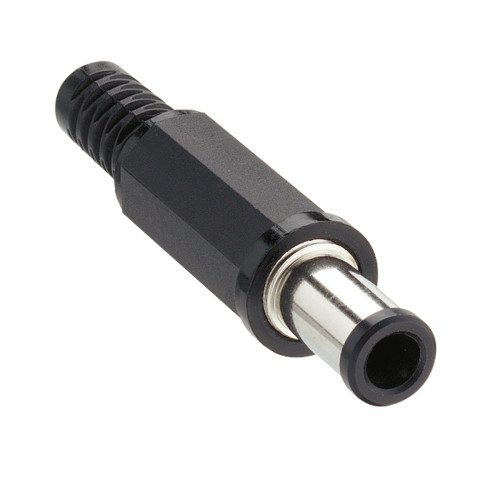
Lumberg’s DC power supply plug according to JEITA RC-5320A JSBP4 is available in a straight version, with solder eyes and bend protection.
Design Notes
Standardization
A variety of standards exist in the DC power connector category to cover specific connector types, such as coaxial and USB formats. No single standard covers the entire category.
Mounting type
Panel mount, through-hole mount soldered to the PCB, and mid-mount SMT are common options. Mounting type for a DC power jack to an end application varies depending on the application.
Mating cycles
Applications that require DC power connectors are often subject to frequent mating and unmating cycles, so these connectors are typically rated for thousands of cycles.
Positions
DC connectors typically have two positions (also referred to as poles or pins): positive and negative. Connecting the positive and negative poles correctly ensures that the electrical device receives the intended voltage and current, preventing potential damage to the device.
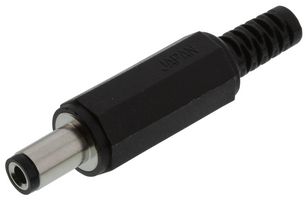
Schurter’s line of appliance inlets includes a selection of DC plugs.
Dimensions
The dimensions of DC connectors can vary widely depending on the specific type and purpose of the connector.
Contacts
DC connectors have specific pin configurations to accommodate various functions, such as power delivery, data transfer, or additional features.
Material specifications
Materials used in DC connectors vary based on the type of connector, its intended application, and environmental considerations.
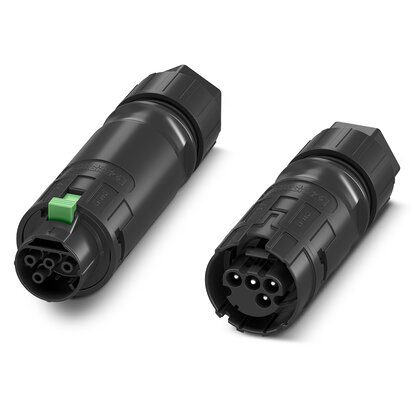
Phoenix Contact’s DC power connectors include the ArcZero series, which enable DC connections to be made in extreme conditions.
Physical properties
Insulation
DC connectors are often designed with insulation to prevent electrical contact between conductive elements and to provide protection against accidental contact with live electrical parts, reducing the risk of a short circuit. The pins, terminals, and other conductive elements within a DC connector are often surrounded or coated with insulating materials.
Shielding
The need for shielding depends on the specific application, the nature of the signals being transmitted, and the environmental conditions. When selecting connectors for applications with potential interference challenges, consider the shielding features and choose connectors that meet the requirements of the intended use.
Environmental properties
IP rating/Sealing mechanism
DC connectors are available with sealing or ruggedization features for use in harsh environment applications.
Electrical properties
Even within similar form factors, DC connectors have different voltage and current ratings. Use of the correct DC connector ensures compatibility and prevents damage to connected devices.
When dealing with DC connectors, pay attention to polarity (positive and negative terminals) and match the voltage and current requirements of the devices being connected to avoid potential damage.
Markets and Applications
Automotive, Consumer, Datacom and Telecom, Industrial, Medical, Military and Aerospace, and others
Suppliers
DC connectors are among the most common of connectors and are available in many variations from many suppliers, including Bulgin, JAE, Lumberg, Phoenix Contact, Rosenberger, Schurter, TE Connectivity, Würth Electronik, and more.
Related products
Like this article? Check out our other Meet the Connector and Power articles, our Industrial Market Page, and our 2023 Article Archive.
Subscribe to our weekly e-newsletters, follow us on LinkedIn, Twitter, and Facebook, and check out our eBook archives for more applicable, expert-informed connectivity content.
- Where in the World is Amphenol LTW’s Luc Kan? - April 23, 2024
- TE Connectivity’s Sustainability Efforts Pay Off - April 23, 2024
- What is a VGA Connector? - April 23, 2024
